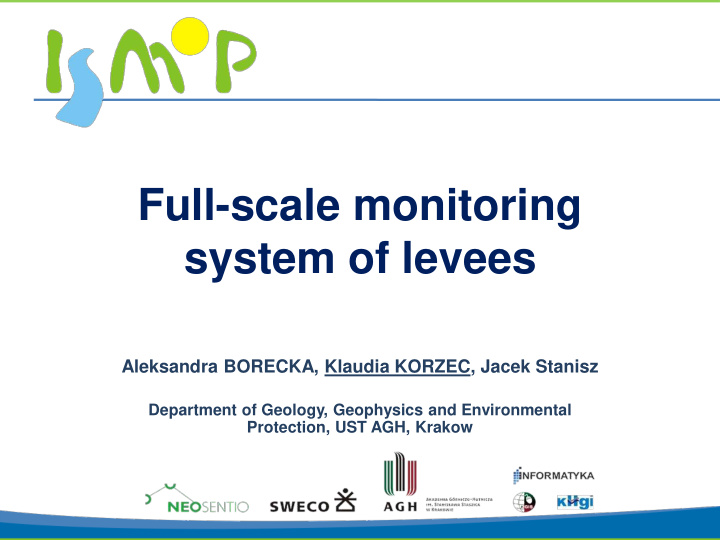



Full-scale monitoring system of levees Aleksandra BORECKA, Klaudia KORZEC, Jacek Stanisz Department of Geology, Geophysics and Environmental Protection, UST AGH, Krakow
Reference sensors 2
Heavy-Duty and Push-In Pore Water Pessure Sensor - Piezometer This kind of piezometer Type PP4 RS in the heavy-duty model with an extra ring filter made of sintered metal. The piezoresistice piezometer is used to monitor pore-water pressures. The pressure sensor of heavy-duty piezometer is encapsulated in a waterproof housing made of stainless steel with a diameter of 40 mm and a length of 230 mm. Filter area: 57cm 2 3
4
Electric Stress Sensor Model with Hydraulic Pressure Pad and Pressure Sensor The electric stress sensor with hydraulic pressure pad and pressure sensor is used for measurements of earth pressure. The pressure pad connected to an electric tranducer is filled with a hydraulic fluid in a closed system. When loading the pressure pad, the arising hydraulic pressure is transferred to the diaphragm of the electric tranducer and converted into a stress proportional to the loading. E VW 20/30 K2 C Pressure and measuring range: Vibrating wire sensor, operating 0 – 2 bar frequency from 2000 cps up to 3300 cps Thermistor type BR55, T 25 = 3000 Ohm 5
6
FIBER OPTIC – GESO DATA S Distributed Temperature Sensing (DTS) The product being developed by GEOS are basen on the fiber optic Distributed Temperature Sensig Technology (DTS). This technology provides temperature readings along the length of an optical fibre with a high temperature resolution as well as a high spatial resolution. The temperature is measured simultaneously at regular intervals of normally 1 meter over the whole length of the fibre; the temperaature over each metre being averaged. 7
8
EXAMPLE 9
Weather station Measurement parameters: Temperature Humidity Pressure Precipitation Air flow (wind speed) 10
Automatic Measurement System (AMS) 11
AMS – sheme of levee 12
AMS – view of cross-section 13
AMS – Reading from the optical fiber 14
http://www.ismop.edu.pl This work was partially supported by the National Centre for Research and Development (NCBiR) under Grant No. PBS1/B9/18/2013
Recommend
More recommend